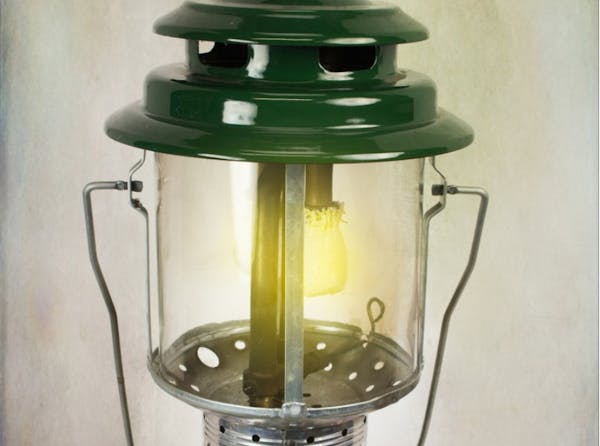Temperatures in Minnesota have begun to climb, which means many people are starting to think about getting hiking and camping gear in shape for summer (whenever pandemic-related restrictions are eased). Of course, thinking and doing are separate things — the fact is, it's easy to procrastinate and end up desperately looking for that lost kid's sleeping bag the night before your first trip of the season.
It's not just locating wayward gear. That mountain of stuff you jammed in the back of the garage last fall — bags, tents, sleeping pads, stoves, packs — will need some TLC before it's ready to go this year, including cleaning, repair and replacement.
With so many spending more time at home, there's really no excuse for putting things off until the last minute.
Getting prepared some summer trips shouldn't be a monumental task. Chew on these ideas.
Sleeping bags: Wash what you have
It's always best to store sleeping bags loosely in a storage bag or on a hanger. If you don't, the fill — whether synthetic or down — eventually will lose its loft. If you've stored your bags compressed in stuff sacks, now is the time to lay them out to see if they still have plenty of loft. Otherwise, it might be time for a new bag. (You might need a new bag anyway if you have a kid who has grown out of one.)
Bags should be washed at least once a year (more if you sleep in your dirty hiking clothes, which should be a no-no), so if you didn't do it last fall, now is the time. Wash it in a bathtub or washing machine with no agitator (normally front-loading), with the proper sleeping bag detergent. Some people put tennis balls in the dryer to break up the down clumps as the bag dries. Finally, check to make sure all the zippers work, and consider using some Gear Aid Zipper Cleaner and Lubricant to clean them and keep them working smoothly.
Sleeping pads: Check for leaks
Self-inflating foam pads are like sleeping bags — they are best stored unrolled, partly inflated, with the valve open. It gives longer life to the foam inside. This spring, inflate all of your pads and leave them out for a few days to make sure there are no leaks, and take time to sponge off dirt that was left on them last year. If you have a leak, repair it according to the manufacturer's instructions; if you're not comfortable doing that, or can't find the leak (putting the pad underwater in a bathtub is an easy way to do that), most pad-makers will do repairs for a nominal fee (or sometimes free). If you don't already have one, order a sleeping pad repair kit and make sure you always have it with you on your trips. Nothing is quite as unpleasant as sleeping on a deflated pad.
Tents: Cleaning, repairing, replacing
A common mistake campers make is packing up a tent in the rain and then tossing it in the garage for the winter. That's the fastest way for mold or mildew to form, which can ruin the tent. If your tent has mold or mildew, Revivex Odor Eliminator might remove the smell. If not, it's time for a new tent. You might also need a new tent if the floor coating has started to peel (not uncommon with cheap tents, even relatively new ones).
If your tent body and rainfly appear in good shape, open the door(s) and shake it to get any dirt out. Check the tent poles to make sure there are no cracks or splits. The easiest solution fix is to buy replacement sections of the same size, if you can find them of the same length and diameter. Replacement poles are surprisingly difficult to obtain from manufacturers, especially if a tent is more than a couple of years old, and if the maker is not providing a replacement free of charge (not uncommon), they can be expensive. There are third parties, such as tentpoletechnologies.com, that make replacements to spec.
Also, if your poles have been stored folded up (and it's pretty impractical to do it any other way), the shock cord eventually will lose its elasticity, something that seems to happen much faster these days, for some reason. It's easy to buy bulk shock cord from an outdoors store, cut it to size and replace yourself; just make sure you lay out all the pole sections in order so you don't get them mixed up when running the new shock cord.
Again, make sure you have a good repair kit for your tent, including mesh patches — mosquitoes love to enter through any unrepaired rips. Also carry a small metal sleeve, available at any outdoor store, that can be slipped over a pole that breaks as a temporary "splint."
Backpacks: Get rid of the dirt
Fortunately, today's internal frame backpacks have few of the fussy parts (clevis pins, split rings) that commonly needed repair or replacement on the old external frame packs. Still, it's a good idea to give your backpack a once-over in spring. Open the lids and pockets, turn the pack upside and give it a shake — you might be surprised at how much dirt and debris fall out. Give it a good sponge bath, especially the bottom, and check to make sure there are no holes. Make sure all the buckles are working smoothly.
Also good to know
Do a dry run with all your other gear, such as stoves and water filters. Check supplies — stove fuel, for example — and stock up now.
After all this, if you end up with gear that you want to sell or donate, especially if you are thinking of replacing it and would like the cash for the new stuff up front, there are a few online sites to check out.
You can donate to Goodwill or similar organizations when they open again. REI accepts usable at rei.com/stewardship/give-back-box.
To sell online, consider eBay or any of a number of Facebook sites, such as Backpacking Gear Sale, SHT Discussion and Hiking Equipment Exchange, or Backpacking Gear Flea Market.
Jeff Moravec is a freelance writer and photographer. Reach him at jmoravec@mac.com.

Reusse: A closer study of the Timberwolves at their absolute best reveals the value of Julius Randle

Twins' run of last-inning wins ends when Royals take a turn

Timberwolves unveil X-factor against Oklahoma City

Learn a key difference between boys and girls lacrosse through two high school specialists

